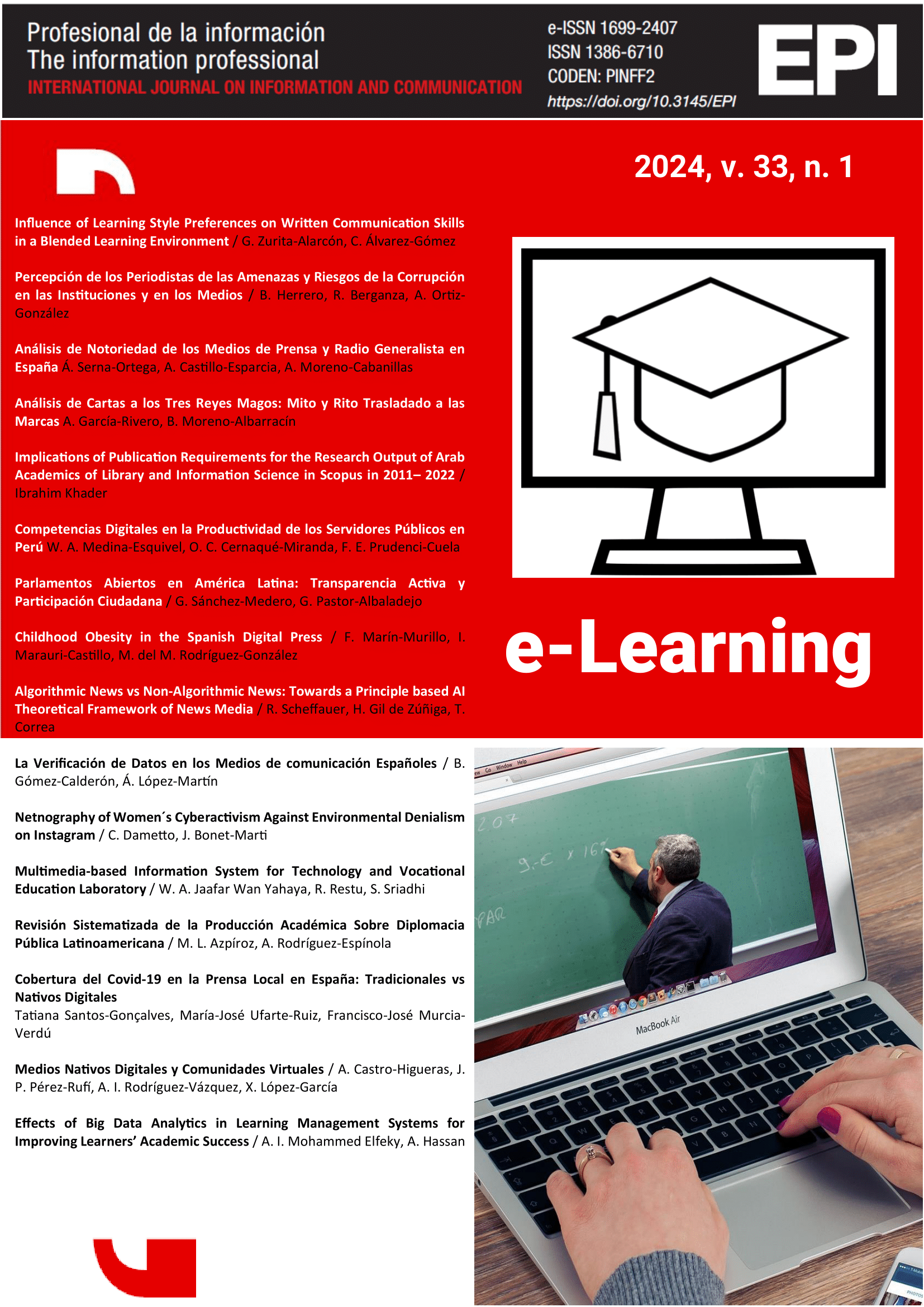Analysis of the Notoriety of General Press and Radio Media in Spain
DOI:
https://doi.org/10.3145/epi.2024.0003Keywords:
Radio, Press, General Media, Notoriety, Media, Digitalisation, Media Audience, Recognition, Media Space, Top of Mind, Select GroupAbstract
Digitalisation has transformed the dynamics of interaction between the media and its audience, requiring rapid transmission of information and adaptation to the diversity of approaches in the current media space (Casero-Ripollés, 2010; Peña Fernández et al., 2019). This research seeks to determine the notoriety of the main Spanish national generalist press and radio media. It also aims to evaluate the differences in recognition according to the socio[1]demographic characteristics of the subjects. The study is of an inferential-correlational type and employs a quantitative approach methodology, with a questionnaire as a data collection tool and a sample of 385 participants randomly distributed throughout Spain. Statistical procedures such as correlation matrices and analysis of variance (ANOVA) were applied to study the relationships between variables. The results reveal that El País leads in notoriety among newspapers, while SER stands out among general radio stations. The select groups are completed by El Mundo and ABC; and the COPE, respectively. Level of education, nationality, age and socio-economic status are the variables that show statistically significant inter-group differences in terms of cumulative recognition indexes. However, in the case of radio, relevant variations are also observed in terms of ideological issues, potentially marked by a circumstantial component. It is worth noting that in none of the scenarios measured does gender act as a differentiating variable. The conclusions reveal a notoriety of the media relatively in line with their audience ratings, although there are other conditioning elements, such as the trajectory of the medium
Downloads
Downloads
Published
How to Cite
Issue
Section
License
Copyright (c) 2024 Profesional de la información / Information Professional

This work is licensed under a Creative Commons Attribution 4.0 International License.
Dissemination conditions of the articles once they are published
Authors can freely disseminate their articles on websites, social networks and repositories
However, the following conditions must be respected:
- Only the editorial version should be made public. Please do not publish preprints, postprints or proofs.
- Along with this copy, a specific mention of the publication in which the text has appeared must be included, also adding a clickable link to the URL: http://www.profesionaldelainformacion.com
- Only the final editorial version should be made public. Please do not publish preprints, postprints or proofs.
- Along with that copy, a specific mention of the publication in which the text has appeared must be included, also adding a clickable link to the URL: http://revista.profesionaldelainformacion.com
Profesional de la información journal offers the articles in open access with a Creative Commons BY license.




